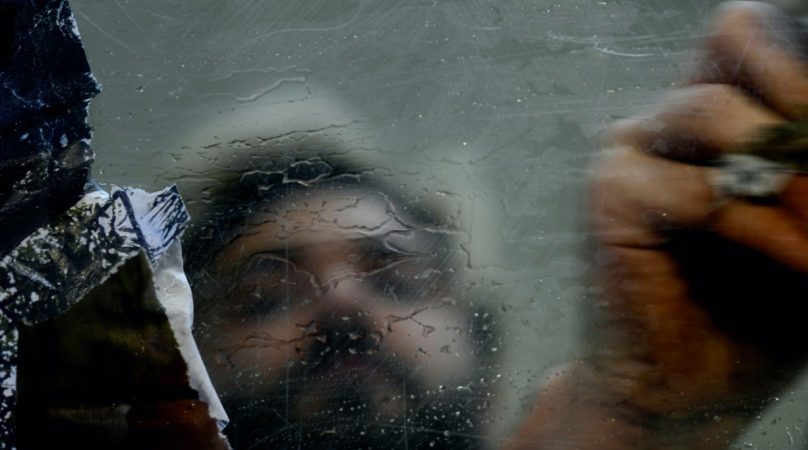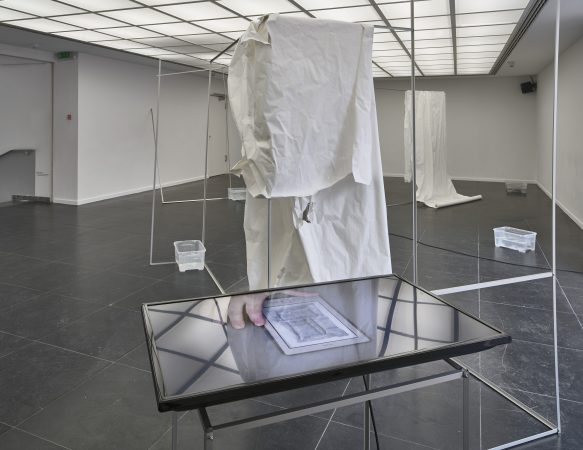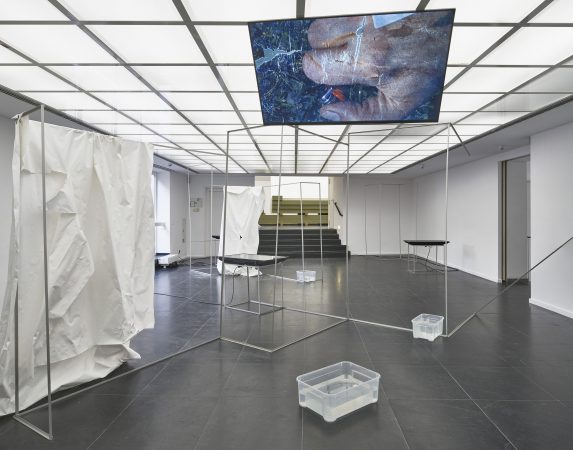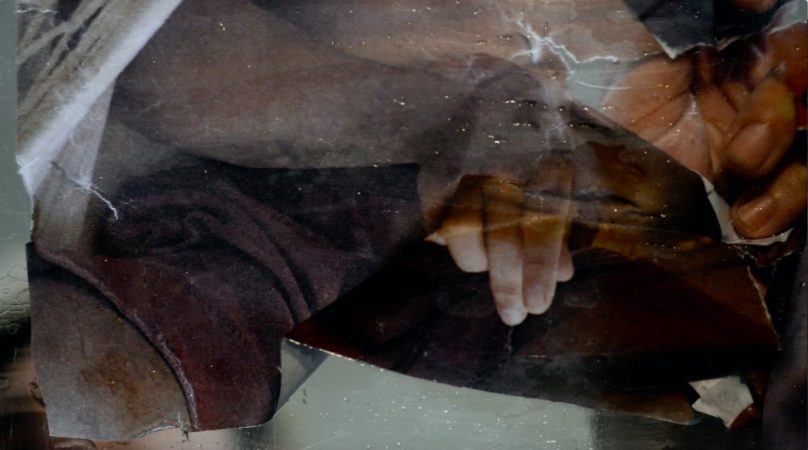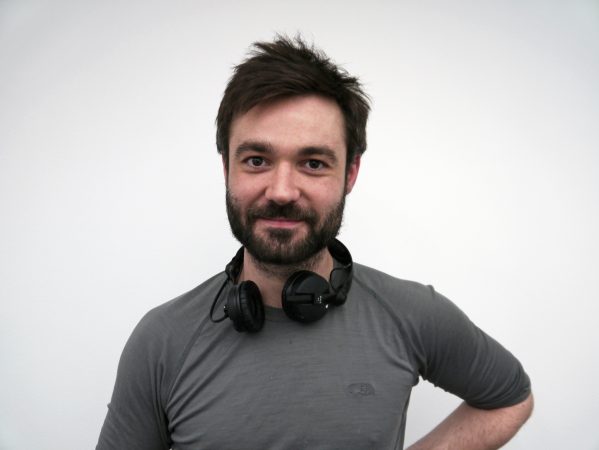Adam Fearon
Paravents, 2017
Installation with the works Prompt, 2016 and Gyricon, 2015
flatscreens, aluminium, paper
Prompt, 2016
Video, 12:56 min
Gyricon, 2015
E-Book (artist publication), Kindle E-Reader and video
10 min
Courtesy the artist
Adam Fearon developed a site-specific spatial installation that combined the filmic works Prompt (2015) and Gyricon (2016) with sculptural structures. Fearon used photographs from his private image archive, motifs such as bodies and spaces, but without context or narrative quality. He explored the question of the dematerialization and legibility of the image when it is reproduced on technological carriers.
In the video work Prompt we observe the artist positioning images on a glass plate. We see his hand applying soaked photographs to the transparent surface, arranging them and pushing them away again. The image carrier has become brittle due to the water, so that the photographs tear when handled. It is the repetition of the repetitive wiping gesture that reminds of the operation of electronic devices. In spite of the extreme close-up, the viewers can only dimly recognize motifs, views of bodies, mouths, or limbs in the sand. The camera’s angle of vision is positioned underneath the glass, so that the viewer can hardly make out the images during their movement and destruction. The artist drew from a private image archive, but through his treatment the images they lost all narrative content. They became pure material that moved on the surface in their materiality, visible for a short time and then disappearing again.
Gyricon is a multi-channel video work. Here, too, the artist’s acting hand was part of the work and the action was an essential part of an ongoing process. For the video’s reproduction Fearon used the Kindle digital reader, turning the text carrier into an image carrier. Here, too, he fed images from his private archive into the system. With a video camera he filmed the manual operation of the Kindle in close-up. His hand flipped the electronic pages, new pictures constantly appeared, but the individual motif lost its meaning. The photographs dematerialized on the electronic paper, a technology from the 1970s that gives the work its title. The e-paper was developed for displays of early mobile phones and electronic devices and represent characters via the electronic arrangement of toner spheres under the screen surface.
Fearon’s work conceptually and formally investigates how the real body, its image and the technical image carrier relate to one another. How is the representation of the real and its technical representation determined? At what point does the decoupling of image and material render the motif completely unreadable? Fearon consciously uses images with strong individual and intimate meaning that remains hidden from the viewer and undeciphered deciphered by him. A transformation takes place that leads to the loss of readability. Filming the image arrangements on different surfaces causes a multi-refraction of visual conventions. The viewer is exposed to a multi-layered flood of images.
Adam Fearon (*1984, Dublin, IE) lives and works in Berlin. He attended the Frankfurt Art Academy Städelschule from 2011 to 2014, where he studied with Prof. Peter Fischli and Prof. Simon Starling. In 2007, he graduated as Bachelor of Fine Art Media at the National College of Art and Design in Dublin (IE). Since 2011, he has received different artist-in-residences, including the Live Collision Residency in Beaulieu-sur-Sonnette (FR) and the FAAP Residency in Sao Paulo (BR). In 2014 he won the travel scholarship of the Hans und Stefan Bernbeck-Stiftung.
The artist has exhibited in the following institutions (selection):
Butler Gallery, Kilkenny (IE), Harbinger, Reykjavik (IS), L’Atelier KSR, Berlin (DE), Büro BDP, Berlin (DE), Room E10-27, Paris (FR), Berlin Art Prize, District, Berlin (DE), NR Projects, Berlin (DE), Temple Bar Gallery, Dublin (IE)

